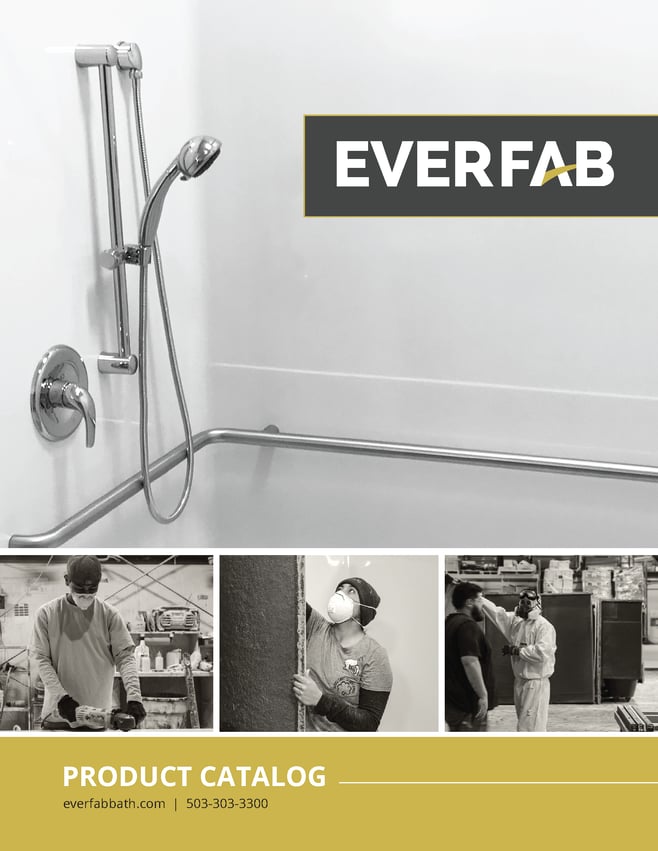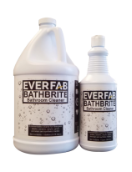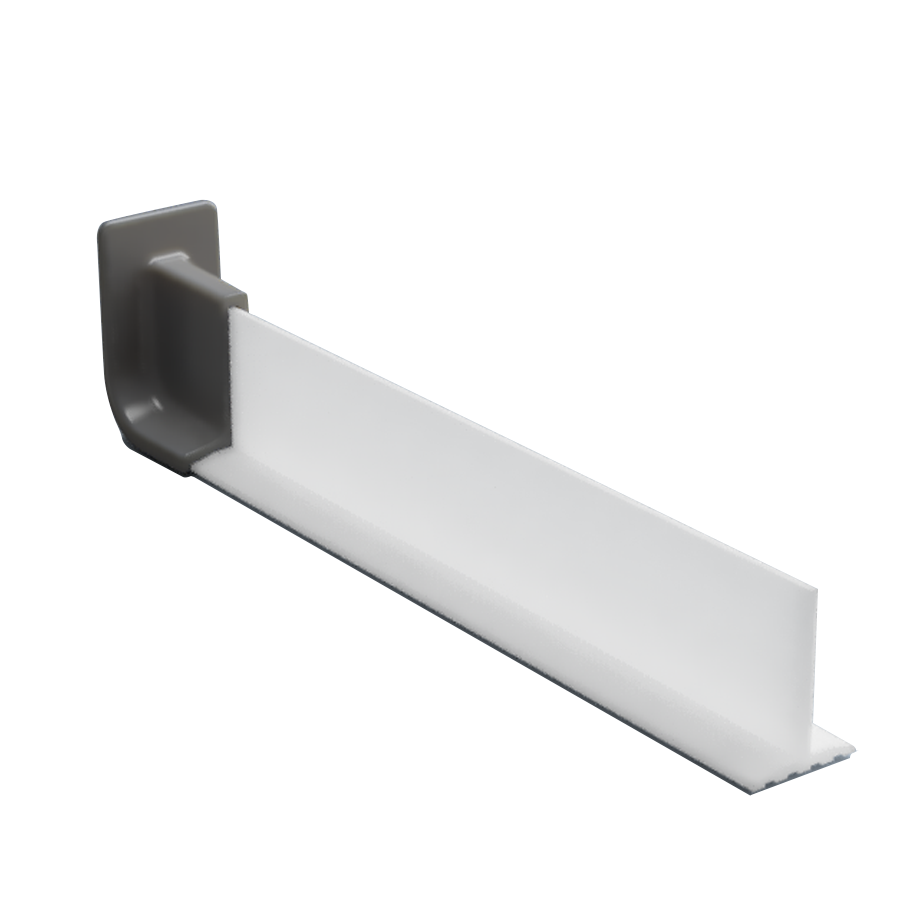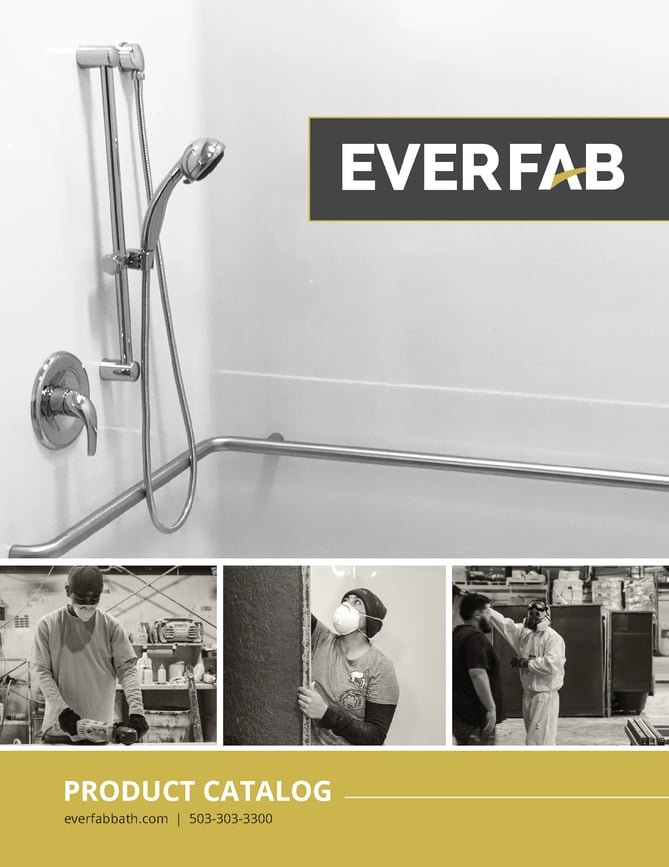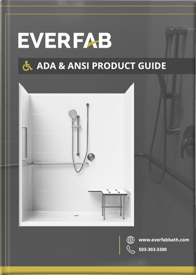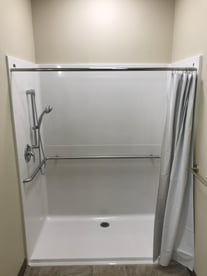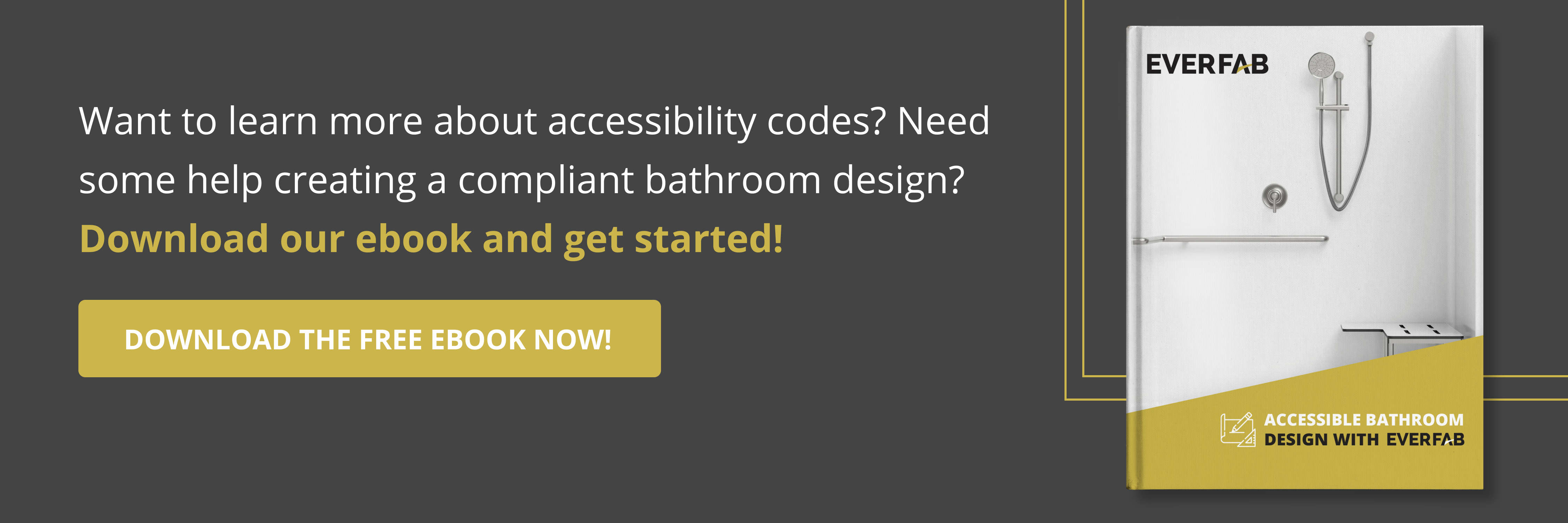-
Shop All Products
-
-
Shop All Products
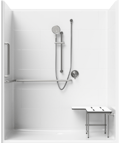
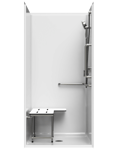
We meticulously sculpt and construct each model by hand to ensure our customers have durable shower units they can comfortably rely on for years to come.
-
-
-
About
-
-
About
We strive to be world-class in everything we do by hiring the best people, building the best product, and providing the best customer experience.
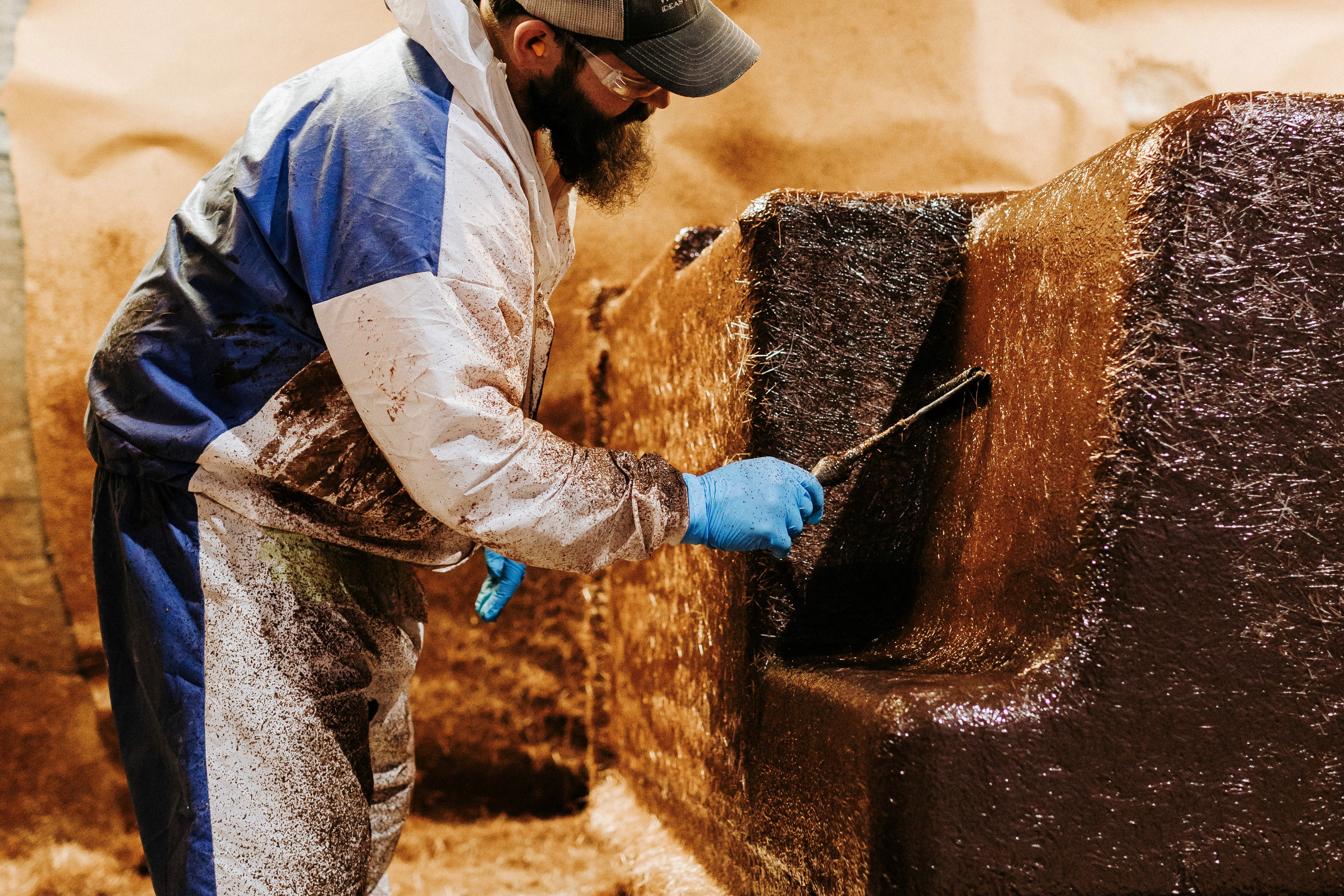
-
-
- Who We Work With
-
Resources
- Projects
- 503-303-3300
- Contact Us
- Search Products
Blog
Discover the latest industry trends and insights related to bathroom architecture and ADA compliance.
17 Accessible Bathroom Design Features to Include in Your Next Project

Accessible bathrooms may be governed by strict sets of compliance standards, but the truth is that a code-compliant bathroom can come in many possible shapes and sizes. As long as the shape and functionality of each component meets the minimum allowable guidelines, you’ll have the freedom to adjust the project to fit a wide range of aesthetics or custom preferences. Some of the elements you’ll need to pay close attention to in your accessible design will include:
- Doorway clearance
- Standing floor space
- Grab bars
- Shower seats
- Faucet design
- Toilet height
- Shower controls and hand showers
- Thresholds
- Enclosure shape and size
- Water temperature
- And more
Showers, in particular, may be subject to specialized ADA requirements depending upon the type of unit you’re installing. A roll-in shower and a transfer shower, for example, each serve unique accessibility purposes and therefore abide by very different compliance standards.
But even a traditional shower design can include ADA compliant elements for additional accessibility, which is of huge benefit in commercial projects that may serve a wide range of users or residents. The best bathroom designs will either be ready-equipped with everything they need to comply with ADA standards, or will have the built-in structure necessary to be upgraded for compliance in the future. Properly reinforced shower walls that are pre-rated to support later installation of ADA compliant grab bars, for example, are an excellent addition to a standard shower design.
Let’s dive in and take a closer look at what we consider the 17 most impactful features and options for an accessible bathroom design. All are worth including in your next bathroom architecture project.
Table of Contents:
- Where to Begin
- ADA vs. FHA Standards
- 6 Accessibility Features in General Bathroom Design
- 3 ADA Compliant Toilet Features
- 3 Accessible Sink and Vanity Features
- 2 ADA Compliant Shower Units
- 3 Helpful Shower Accessories
- Designing a Better ADA Compliant Shower
Where to Begin
Form follows function. When you’re plotting out an accessible bathroom design, you’ve got to start by asking yourself who will be using the bathroom, and which accessibility functions will have the most impact on day-to-day usability. You might reflect upon questions like these:
- Does the user prefer a tub unit or a shower unit? If you don’t know the identity of the user, what do you anticipate based upon the building’s intended use?
- Where in the bathroom might the user require assistance?
- If specialized medical supplies are needed, where must they be placed to be most useful?
- If the user acts independently, where will a grab bar be the most helpful?
- Should the condition of the user worsen, what future accessibility features would it be wise to plan for now?
The answers will drive your design and help you to prioritize the accessibility features that will be both the most relevant and the most helpful.
ADA vs. FHA Standards
At EverFab, we manufacture shower units and shower-tub units that comply with (and exceed) a wide variety of accessibility standards. However, ADA and FHA are the two that you will encounter most often in bathroom architecture. Between the two, we prefer to reference ADA standards due to their generally higher threshold for accessibility. The major difference between them can be summed up like this:
- ADA Standards: ADA compliant bathroom features such as tubs, toilets, and showers must be accessible to individuals with disabilities upon installation.
- FHA Standards: The bathroom must be usable upon completion, but may not be inherently accessible, as features such as grab bars and seats are not required to be pre-installed.
This isn’t to say that FHA standards do not promote accessibility—they do. FHA compliant showers must be reinforced with the appropriate strength to support future installation of accessibility features such as grab bars, for instance. However, if you want to ensure that your bathroom project covers the most possible bases, paying attention to ADA compliance standards is your best bet.
6 Accessibility Features in General Bathroom Design
The general shape of the room and doorways will be critical to overall bathroom accessibility, regardless of the plumbing fixtures that are the focal points of the bathroom. Here are a few primary features of a generally accessible bathroom design:
- Clear Floor Space For Wheelchairs: Accessible bathrooms must provide room for mobility devices to turn around while in front of each of the plumbing fixtures. Reserve a minimum 30” x 48” area in front of the sink and the toilet. Do not include loose bathmats in the design, as these are obstacles for wheelchairs.
- Wide-Clearance, Outward-Swinging Doors: Doorways must provide at least 34” clearance for wheelchairs and other mobility devices to roll into the room. A door that swings out rather than in allows for more space within the room.
- Levers, Not Doorknobs: Lever-style handles are easier to operate for some disabled individuals than round knobs.
- Room For an Assistant: Certain individuals will require an attendant while in the room. Take this into consideration when deciding how much space to allocate in the floorplan.
- Low Storage: Lowered pull-out shelving or storage compartments will declutter the bathroom and promote clear floor space while allowing for individuals who cannot reach high spaces to access the products they need.
- Accessible Light Switches: A person sitting down in a wheelchair should be able to easily operate the switch. Push buttons or toggles are easier to operate than switches that must be pinched. For some users who cannot easily operate a switch at any height, motion detector lights are an excellent option.
3 ADA Compliant Toilet Features
According to ADA guidelines, an accessible bathroom toilet is recommended to be in the range of 17-19” in height. This should be comfortable for general users, but a higher toilet can make it easier for disabled individuals to lower themselves, stand up, or transfer from a mobility device to the toilet. A thicker toilet seat or wall-mounted toilet can be selected for more customization of unit height to best suit the intended user.
You might also consider accessible toilet features like these for your accessible bathroom project:
- An ADA Compliant Grab Bar: Place a grab bar on a wall beside the toilet, positioned at an 18” distance. Ideally, the toilet could be positioned between two support bars that stand 36” apart.
- A Bidet: Individuals who have trouble twisting or reaching to use toilet paper may benefit from a bidet, which could allow for improved hygiene, more privacy, and more independence.
- Nearby Supplies: Sanitary products, medical supplies, or extra toilet paper are best positioned within reach of the user while seated on the toilet, to prevent the need to get up and sit back down.
3 Accessible Sink and Vanity Features
Sinks and vanities can be tricky, as they must be positioned for both sitting and standing users with enough open space underneath for a seated user’s knees. Sink units should be wall-mounted with no cabinet beneath the basin. If approached from the front, use a 34” maximum height for the rim of the sink, and ensure at least 27” clearance for knee space. It is also possible to select a sink that can be approached from one side. Consider these additional accessibility options in your design:
- Grab-Free Faucets: It is best not to use faucets that must use a twisting or grabbing action from the user’s hand. A single-handle faucet is easier to adjust without gripping it, and a hands-free, sensor-enabled design is even more accessible.
- Second Mirror: A second low-positioned, extra long, or tilt mirror in addition to the mirror over the sink makes it possible for everyone to use a mirror effectively.
- Low Storage: Over-the-sink cabinets can be out of reach for some people. Use storage that is lower down and possibly that pulls out to increase accessibility. However, don’t place it directly beneath the sink where it will interfere with a seated person’s knees.
2 ADA Compliant Shower Units
The dimensions of the shower and the threshold are two of the most critical elements of accessibility, regardless of whether you’ve chosen ADA, FHA, ANSI, or some other set of standards as your baseline for compliance. The type of shower you’re dealing with will certainly affect the exact required dimensions. For transfer and roll-in showers (two of the most common accessible designs), these are the design features to monitor:
Transfer Showers
ADA compliant transfer showers are designed to support standing users who are able to transfer themselves (without assistance) from a walker or wheelchair into the shower. The ADA standards and features below are intended to provide these users with the safest and most comfortable experience, and differ from roll-in shower standards in several ways. In general, ADA transfer showers are smaller, require less clearance, and serve a different purpose than ADA roll-in showers.
- Interior dimensions of at least 36” x 36”
- Clearance of 36” in width and 48” in length as measured from the control wall
- A rounded threshold/curb of no higher than ½”
- Folding or non-folding seats that can withstand at least 250 pounds of force
- Grab bars include 1.5” of space between the bar and the shower wall, and are able to support at least 250 pounds of force
- Shower controls (faucet, spray unit, etc.) positioned at least 38” from the shower floor and no higher than 48”
- Controls are installed on the sidewall opposite the shower seat
Read more about these ADA standards here. There is some flexibility if your project is in a residential home. Grab bars and seats, for instance, are optional in a residential setting so long as the unit is reinforced to support future installation, if necessary.
Roll-in Showers
A fully wheelchair accessible bathroom design will feature an ADA compliant roll-in shower stall. Rather than transferring out of the chair and into the shower, these units allow for users to roll their wheelchairs directly into the shower for the easiest, most comfortable experience. The ADA shower requirements for a roll-in shower are somewhat more demanding than a transfer design.
- Interior dimensions of at least 30” wide and 60” deep
- Clearance of 30” wide and 60” long at the opening of the shower unit
- A rounded threshold (curb) of no higher than ½” that is beveled, rounded, or vertical in shape
- A folding seat that can withstand at least 250 pounds of force
- Grab bars (required) are on the back wall and the sidewall opposite the shower seat, include 1.5” of space between the bar and the shower wall, and are able to support at least 250 pounds of force
- Shower controls (faucet, spray unit, etc.) are located above the grab bar but no higher than 48” above the shower floor
- Controls are installed on the back wall adjacent to the shower seat and no further than 27” from the seat wall.
The strength-tested seat in a roll-in shower should be foldable, naturally, so that the user has the option to sit in their chair or to use the required, built-in shower seat. Our S6334A roll-in shower stall meets all of these standards and features thresholds in 15⁄8”, 1”, or 1⁄4” no-recess height options, meaning you can be confident that it will meet the needs of your bathroom design.
It’s worth noting that the threshold standard may be subject to an exception: accessible bathrooms in existing facilities in which a ½” threshold would compromise the floor slab's structural integrity will be permitted to use a maximum of a 2” threshold.
3 Helpful Shower Accessories
A standard shower may be able to do without these design features, but an accessible bathroom design will accommodate for the needs of all users with required or recommended accessories like these.
ADA Compliant Grab Bars
At EverFab, we offer three fully ADA compliant, flangeless styles (straight, L-shaped, and U-shaped) to suit the shape and needs of each shower unit. All compliant grab bars must adhere to the following standards.
- 1.5” of space between the wall of the shower and the bar
- At least 1.5” of space between the bar and projecting objects below it
- At least 12” of space between the bar and any projecting objects above it
- Supports up to 250 pounds of stress
ADA Folding Shower Seats
Our folding shower seats are all constructed from durable, water-resistant phenolic material that exceeds ADA strength requirements (ours support up to 1,000 pounds of weight) and fold to preserve space. Pay attention to these ADA standards for folding shower seats.
- Able to withstand up to 250 pounds of weight
- Required in any transient lodging/guest room
- Not required in residential dwellings, but walls must be reinforced for future installations
ADA Shower Kits
Showerheads, handles, and the like enjoy plenty of design options, but an ADA compliant kit should always include the following features.
- Mixing valve (to regulate water temperature to safe, comfortable levels)
- Trim kit
- Slide bar
- Adjustable temperature stop
- Pressure balancing mechanism
Designing a Better ADA Compliant Shower
Every accessible shower design has one goal above all else: to provide a safe and comfortable shower experience. When you work with EverFab, we pre-install fully ADA compliant shower accessories at our factory and ship with a reliable process that minimizes any risk of compromising the integrity of the shower unit in transport.
All of our units are strength tested to establish compliance with ADA requirements, and Carlson Testing Inc (CTI) has verified that our showers actually exceed the minimum standards by a healthy margin. For example, the grab bars and seat on our ADA compliant shower model S3839A and the grab bars in our tub-shower model TS6032A supported double or more of the required weight thresholds in load-bearing tests.
We’re also well-versed in unique state administrative code compliance requirements, such as those for Washington State and California. While not required by the ADA, our proprietary reinforced shower bases are the sturdiest in the industry. Cracking and damage to the shower bottom is the most common failure point in showers, and EverFab is proud to be the exception to the trend.
We would consider it a privilege to work with you and show you firsthand what makes our units so reliable for a fully accessible bathroom design. Give us a call or book a meeting to talk with our expert team of shower and bathroom artisans!
Get the latest!
Subscribe to our newsletter
Read On
Senior Living Design and ADA Compliant Bathrooms Go Hand-in-Hand
ADA compliance is a top priority in effective senior living design. However, ensuring you meet...How EverFab Builds the Best Bath Systems for Senior Living Facilities
The design of the bathroom at a senior living facility plays a critical role in resident...8 Universal Design Bathroom Trends
The idea behind universal bathroom design is to create a room that’s accessible to people of all...9050 Porter Way SE, Aumsville, OR 97325
COPYRIGHT © 2025 EVERFAB
